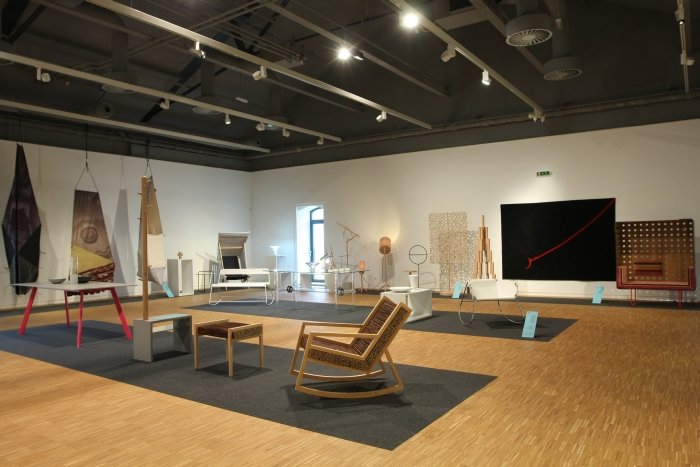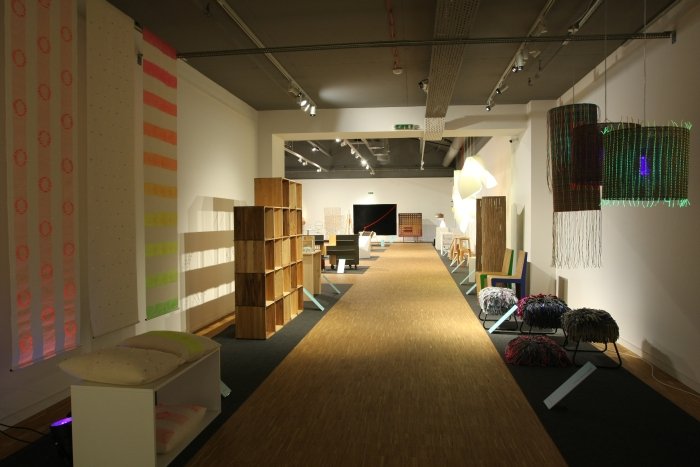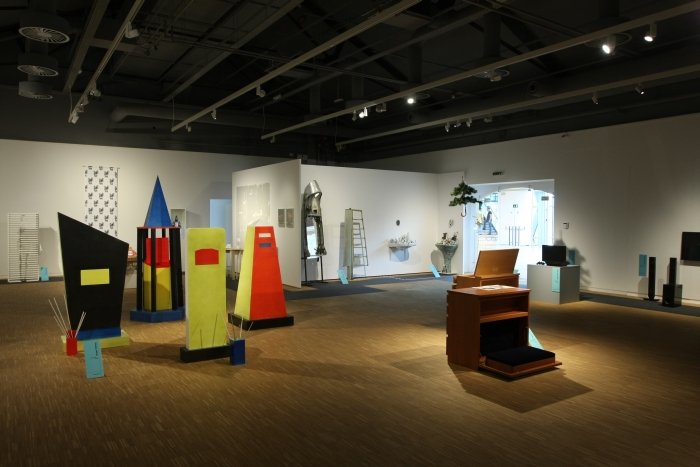In 2014 the exhibition "madeinhungary" celebrates its 10th anniversary. What began as a presentation of contemporary Hungarian product design hosted as part of the Budapest "Home Trend" trade fair has existed since 2013 as an independent event staged during Budapest Design Week. And has slowly evolved into a sort of annual family get together for the Budapest design community. For the 2014 edition organisers, curators and project initiators Szilvia Szigeti and Tamás Radnóti have compiled a showcase of recent works by over 40 Hungarian design studios in an exhibition that presents both a very nice mix of furniture, lighting and accessories and also ably demonstrates that young Hungarian designers share the same cosmopolitan sartorial preferences as their counterparts elsewhere in Europe. And are working on similar topics: new uses of new materials, new uses of established materials, sustainability, optimal use of room and space, challenges of a mobile, post-industrial society, private space in a public world etc, etc, etc. It is all there in a very accessible, easily viewed exhibition which nicely underscores and highlights the quality of work currently being produced in Hungary.

Given that 2014 marks the tenth anniversary edition the obvious question one poses while viewing the exhibition is, have things got better, easier, for Hungarian designers over the intervening decade? "No" replies Szilvia Szigeti "sadly it is the case that many of the local manufacturers have closed and so compared to ten years ago designers today have less options not only in terms of what they can produce and how but also with whom they can cooperate to develop new ideas. In terms of the quality of the ideas, the innovation and the design approach, the niveau is as good as ever, but these days many designers must make almost everything themselves with the resources that are available, and that is obviously limiting. Although one must also add that the community is very vibrant despite the fact that the situation isn't so simple"
In addition to a lack of manufacturers two further problems beset Budapest's product designers, or perhaps better put, two further problems combine to make the situation even less simple than it could or should be: the lack of an internal market and not being on the international radar.
"The Hungarian market is very small, in effect it is only Budapest", says Farkas Pongrácz from design studio Blum & Wolf, "and being a city of just two million residents even here there are only a very limited number of private customers interested in design" Consequently an important market for Budapest's designers is contract work realised in cooperation with architects, "We, for example, as a specialist lighting studio focus on project office work and helping our network of architects find solutions for their projects." A recent commission in this context being the use of their Möbio light in Emirates Airline's Budapest offices. However walking round Budapest one doesn't have the impression that there is a lot of new and/or re-development work happening in the city, the current economic and political situation in Hungary being reflected in investment and meaning that for the local designers such projects aren't as regular or fulsome as is the case for designers in other European metropoli.

And so with limited possibilities to have products produced and sold at home, the obvious solution is to look abroad. Blum & Wolf, for example, have a lamp in production with Amsterdam based manufacturer Flux, and others are hoping to follow suit. Not that anyone is waiting for foreign buyers to come to Budapest.
"No you have to go to other countries, attend exhibitions and design weeks to try to get your work noticed" says András Kerékgyártó, "not many people come to Hungary looking for products or designers". A recent graduate of first the Moholy-Nagy University of Art and Design Budapest and laterally the Aalto University of Art and Design Helsinki András made his international début at Milan's Salone Satellite in 2014, and promptly found a company interested in one of his chair designs. Ironically a Hungarian company who saw András' Milan stand profiled on an internet platform. A state of affairs that underscores the problems many Hungarian designers have being recognised at home.
András however sees a glimmer of hope, that vibrancy to which Szilvia referred, "I think there is a change slowly taking place, and for example there are three or four young fashion labels from Budapest who are establishing good international reputations, and I think in time other branches such as product design will follow."
Obviously a show such as madeinhungary should help promote contemporary Hungarian design, promote the genuine quality that can be found in Hungary; however, it is currently only shown in Hungary. And is barely noticed by the national media. "At the press conference today there were no journalists from the state media", says Szilvia Szigeti, "and for an event with over 100 designers that is very disappointing" And a truly abstract situation. A comparable exhibition in Germany, the UK, Holland, Spain, anywhere, would have been guaranteed the undivided attention of the local TV and radio stations, while the local newspaper photographers would have busied themselves with composing the classic shots every newspaper editor demands from such an event. There weren't any local press photographers at the madeinhungary 2014 preview. Given such conditions it is therefore no real surprise that a young designer such as András Kerékgyártó had to show his chair in Milan to attract the attention of a Hungarian partner.
To help raise the profile of Hungarian design Szilvia Szigeti would like to be able to present the exhibition overseas, but that is a question of funding. Which generally means in the first instance government funding through cultural institutes and similar bodies. Which is isn't something we can imagine is especially high on the current Hungarian government's list of priorities.

In addition to madeinhungary "Design Without Borders", as the whole event is termed, is presenting two further exhibitions as part of its 2014 edition.
In 2012 Szilvia Szigeti and Tamás Radnóti premièred "meed - Meeting of Central European Designers", a curated exhibition of works by selected young designers from the Czech Republic, Poland and Slovakia and whose presence raises madeinhungary from the most important presentation of contemporary Hungarian design to unquestionably one of the most inclusive presentations of contemporary East and Central European design to be staged anywhere.
While going beyond classic product design, the 2014 edition of Design without Borders is being presented for the first time in the New Budapest Gallery and to mark the occasion also plays host to an exhibition of contemporary art, antidesign and social design curated by Gábor Andrási, Ágnes Konkoly, Zsuzsanna Szegedy-Maszák and Tamás Török from the New Budapest Gallery, an exhibition which neatly compliments, expands, and in a way questions and challenges, the product design on show.
Should you be in Budapest in the coming weeks we can recommend taking time out from visiting old buildings and cheap-ish bars to view Design Without Borders and wish madeinhungary Happy Birthday!
It's as much a gift for you as it is to them!
Design Without Borders - madeinhungary + meed runs at the New Budapest Gallery, 1093 Budapest, Fővám tér 11-12 (Bálna Budapest) until Sunday November 23rd.
Full details including further information on all featured studios can be found at madeinhungary.co.hu